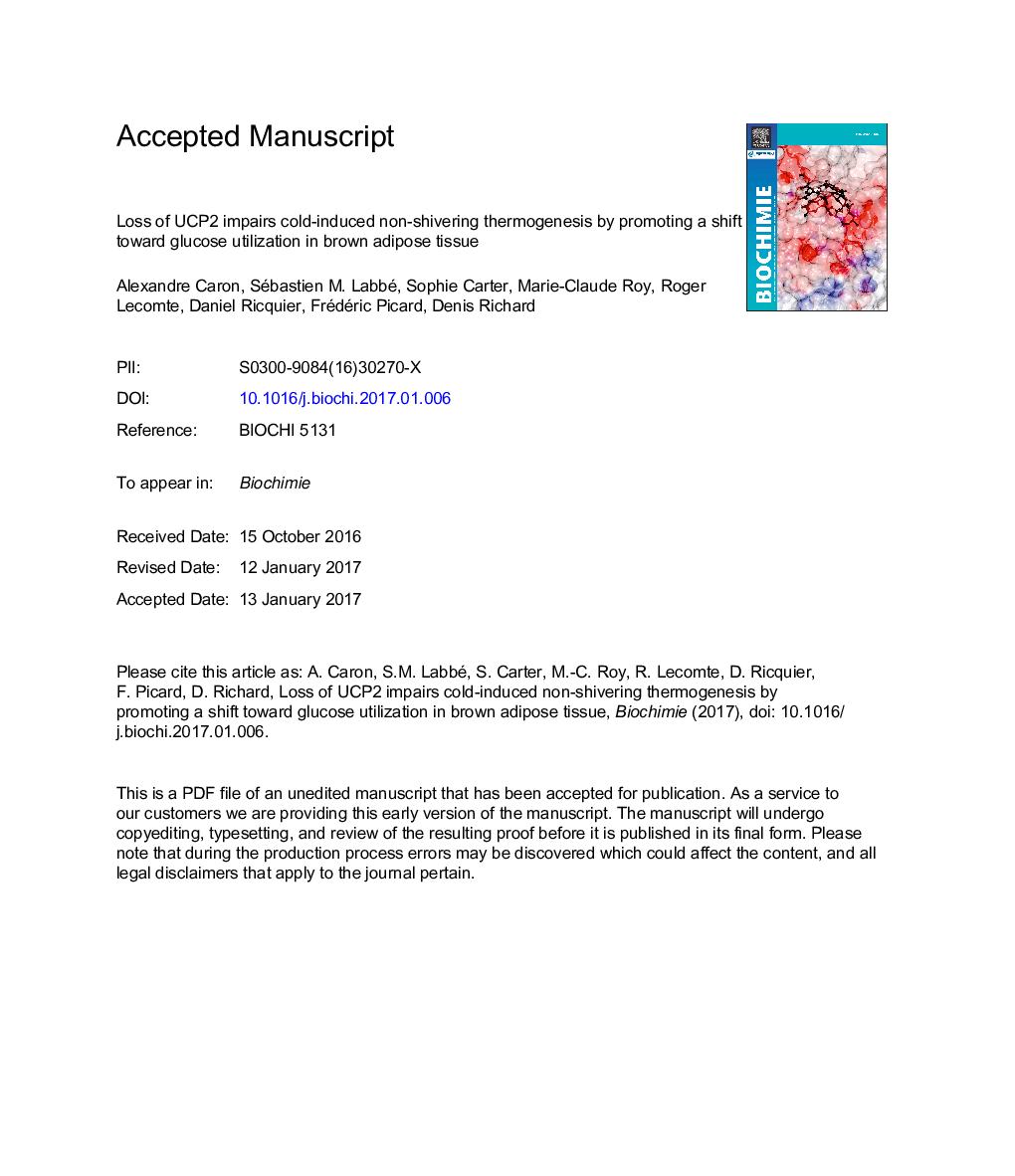| Article ID | Journal | Published Year | Pages | File Type |
|---|---|---|---|---|
| 5509135 | Biochimie | 2017 | 32 Pages |
Abstract
Uncoupling protein 2 (UCP2) was discovered in 1997 and classified as an uncoupling protein largely based on its homology of sequence with UCP1. Since its discovery, the uncoupling function of UCP2 has been questioned and there is yet no consensus on the true function of this protein. UCP2 was first proposed to be a reactive oxygen species (ROS) regulator and an insulin secretion modulator. More recently, it was demonstrated as a regulator of the mitochondrial fatty acid oxidation, which prompted us to investigate its role in the metabolic and thermogenic functions of brown adipose tissue. We first investigated the role of UCP2 in affecting the glycolysis capacity by evaluating the extracellular flux in cells lacking UCP2. We thereafter investigated the role of UCP2 in BAT thermogenesis with positron emission tomography using the metabolic tracers [11C]-acetate (metabolic activity), 2-deoxy-2-[18F]-fluoro-d-glucose (18FDG, glucose uptake) and 14(R,S)-[18F]fluoro-6-thia-heptadecanoic acid [18FTHA, non-esterified fatty acid (NEFA) uptake]. The effect of the β3-adrenoreceptor (ADRB3) selective agonist, CL316,243 (CL), on BAT 18FDG and 18FTHA uptakes, as well as 11C-acetate activity was assessed in UCP2KO and UCP2WT mice exposed at room temperature or adapted to cold. Our results suggest that despite the fact that UCP2 does not have the uncoupling potential of UCP1, its contribution to BAT thermogenesis and to the adaptation to cold exposure appears crucial. Notably, we found that the absence of UCP2 promoted a shift toward glucose utilization and increased glycolytic capacity in BAT, which conferred a better oxidative/thermogenic activity/capacity following an acute adrenergic stimulation. However, following cold exposure, a context of high-energy demand, BAT of UCP2KO mice failed to adapt and thermogenesis was impaired. We conclude that UCP2 regulates BAT thermogenesis by favouring the utilization of NEFA, a process required for the adaptation to cold.
Related Topics
Life Sciences
Biochemistry, Genetics and Molecular Biology
Biochemistry
Authors
Alexandre Caron, Sébastien M. Labbé, Sophie Carter, Marie-Claude Roy, Roger Lecomte, Daniel Ricquier, Frédéric Picard, Denis Richard,
